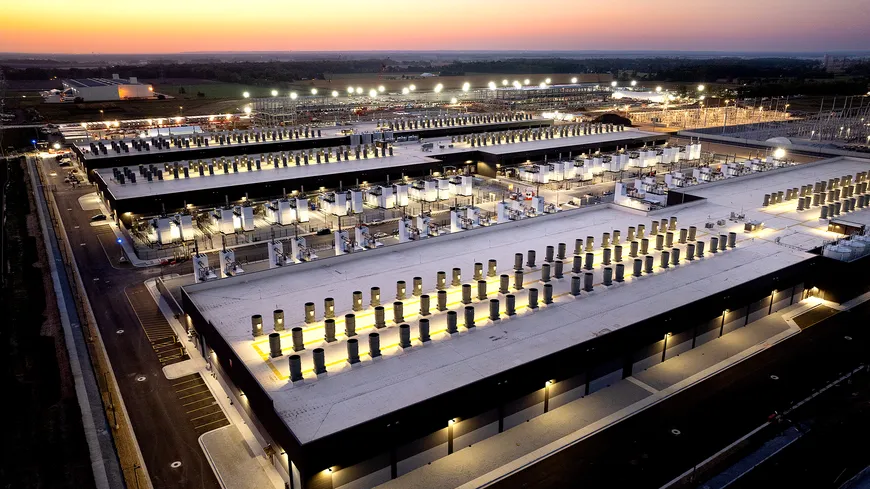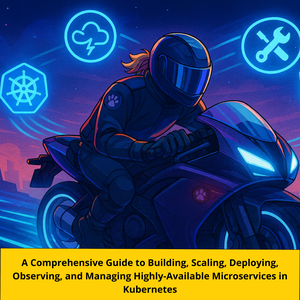
TL;DR
AWS has launched Project Rainier, a massive AI compute cluster with nearly half a million Trainium2 chips, in collaboration with Anthropic to advance AI infrastructure and model development.
Key Points
Highlight key points with color coding based on sentiment (positive, neutral, negative).AWS's Project Rainier is a massive AI compute cluster featuring nearly half a million Trainium2 chips, with plans to expand to over 1 million by 2025.
Trainium2 chips are specialized for AI workloads, offering significant advantages in performance and efficiency for AI model training.
AWS's vertical integration allows control over every aspect of the technology stack, optimizing machine learning processes.
AWS is focused on improving energy efficiency in its data centers, matching electricity consumption with renewable energy resources.
AWS has partnered with Anthropic, which is using the Project Rainier cluster to develop its AI model, Claude.
Key Numbers
Present key numerics and statistics in a minimalist format.The number of Trainium2 chips powering Project Rainier, forming one of the world's largest AI compute clusters
The projected number of Trainium2 chips that Anthropic's Claude model will utilize by the end of 2025
The relative size increase of the Trainium2 AI computing platform compared to any previous AWS AI infrastructure
The number of Trainium2 chips per physical server in Project Rainier's architecture
The total number of Trainium2 chips in each UltraServer, which combines four interconnected servers
The estimated number of years it would take a person to count to one trillion, used to illustrate Trainium2's trillions of calculations per second
The expected reduction in mechanical energy consumption from new AWS data center designs supporting AI workloads
The reduction in embodied carbon achieved through improved concrete design in new AWS facilities
The industry average data center water usage effectiveness (WUE) as measured in liters per kilowatt-hour
AWS's current water usage effectiveness (WUE), more than twice as efficient as the industry standard
The improvement in AWS's water efficiency since 2021, reflecting progress in sustainable data center design
Stakeholder Relationships
An interactive diagram mapping entities directly or indirectly involved in this news. Drag nodes to rearrange them and see relationship details.Organizations
Key entities and stakeholders, categorized for clarity: people, organizations, tools, events, regulatory bodies, and industries.AWS is responsible for the development and operation of Project Rainier, a large-scale AI compute cluster.
Anthropic partners with AWS to utilize Project Rainier for developing its AI model, Claude.
Tools
Key entities and stakeholders, categorized for clarity: people, organizations, tools, events, regulatory bodies, and industries.Trainium2 chips are used in Project Rainier to accelerate AI and machine learning tasks.
Regulatory
Key entities and stakeholders, categorized for clarity: people, organizations, tools, events, regulatory bodies, and industries.AWS aims to achieve net-zero carbon emissions by 2040, influencing the design of Project Rainier.
Industries
Key entities and stakeholders, categorized for clarity: people, organizations, tools, events, regulatory bodies, and industries.Project Rainier is focused on advancing AI infrastructure and model training within the AI and technology sectors.
Timeline of Events
Timeline of key events and milestones.All electricity consumed by Amazon's operations, including data centers, was matched 100% with renewable energy resources.
AWS announced new data center components projected to reduce mechanical energy consumption by up to 46% and reduce embodied carbon in concrete by 35%.
Project Rainier becomes operational with nearly half a million Trainium2 chips.
Data centers in St. Joseph County, Indiana, will not use any water for cooling.
Data centers in St. Joseph County, Indiana, will use cooling water for only a few hours per day.
AWS expects Project Rainier to expand to over 1 million Trainium2 chips.
AWS aims to be net-zero carbon by 2040.
AWS's Project Rainier is making waves in the world of AI compute clusters, and it's doing so at breakneck speed. Announced less than a year ago, this colossal infrastructure is already up and running, boasting nearly half a million Trainium2 chips. That's right, it's one of the largest AI setups on the planet. This ambitious project is a collaboration between AWS and Anthropic, a key player in AI safety and research. Anthropic is using Project Rainier to supercharge its AI model, Claude, which they expect will be running on over a million Trainium2 chips by the end of 2025. Quite the leap, isn't it?
Now, let's talk about what makes Project Rainier tick. It's all about enhancing AI model training and deployment. Those Trainium2 chips? They're custom-built for AI training, allowing for the rapid processing of massive data volumes. This is crucial for teaching AI models to handle complex tasks. In fact, this setup is 70% larger than any previous AI computing platform AWS has rolled out. That's a significant jump in their AI capabilities, no doubt about it.
The architecture of Project Rainier is something to behold. It features UltraServers and UltraClusters, all connected with high-speed links to slash latency and boost computational efficiency. This means data zips around quickly, and complex calculations happen across thousands of interconnected servers. AWS's strategy here includes vertical integration, which gives them control over every part of the tech stack, from chip design to data center architecture. This control lets AWS optimize machine learning processes and cut costs, making AI more accessible to everyone.
Sustainability is also a big deal for AWS. They're pushing hard to boost energy efficiency and cut carbon emissions. The data centers powering Project Rainier are designed to run on renewable energy and use innovative cooling techniques to minimize water usage. AWS is committed to hitting net-zero carbon emissions by 2040, and Project Rainier is a big part of that plan. By incorporating energy-efficient technologies and practices, this project not only pushes the boundaries of AI infrastructure but also sets a new benchmark for computational power. It's enabling AI to tackle complex global challenges, from medicine to climate science. Exciting times ahead!
Additional Resources
Enjoyed it?
Get weekly updates delivered straight to your inbox, it only takes 3 seconds!Subscribe to our weekly newsletter Kala to receive similar updates for free!
Give a Pawfive to this post!
Start writing about what excites you in tech — connect with developers, grow your voice, and get rewarded.
Join other developers and claim your FAUN.dev() account now!
FAUN.dev()
FAUN.dev() is a developer-first platform built with a simple goal: help engineers stay sharp without wasting their time.

Kala #GenAI
FAUN.dev()
@kala

















